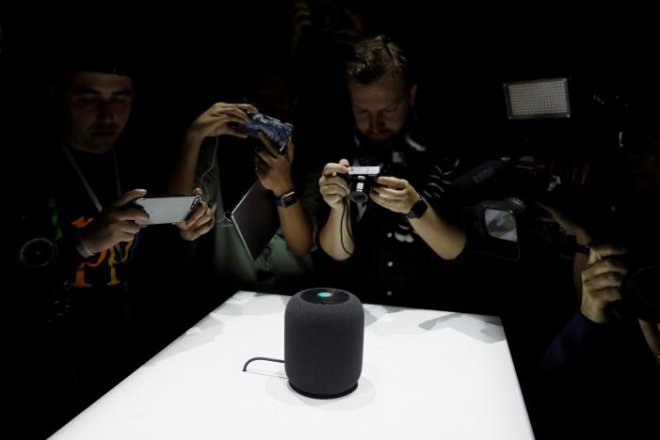
Ahead of the official launch, it has now emerged that Apple's HomePod is running on a full iOS stack. The smart speaker was unveiled at WWDC 2017 in June and is expected to go on sale from December 2017.
Developer Steve Troughton-Smith, who examined the code of the recent iOS firmware, found that HomePod runs iOS with a shell app titled as SoundBoard. This app is likely to work in a way similar to SpringBoard that comes preloaded with the iOS version on iPhone and iPad and handles homescreen. Troughton-Smith also found that the platform prefixes keyword "Air" with preloaded apps, which seems to make some distinction with the apps designed for other iOS devices.
"Looks like the 'shell' app on HomePodis called SoundBoard. It runs a full iOS stack, unsurprisingly, its apps are prefixed with 'Air'," the Ireland-based developer tweets.
Apple didn't reveal much about the HomePod speaker, except showcasing Siri integration and a hardware powered by the A8 chip and seven tweeters. However, the firmware (iOS 9.9.11.0.2) highlights that the Cupertino Company has provided accessibility features including VoiceOver. There are also basic iOS apps such as AirMusic and AirPodcasts.
Similar Amazon Echo, which is a competitive option in the market, the HomePod speaker has a plus and minus volume keys on top. The touch surface area on the top also allows users to activate Siri with a long press.
LED matrix on top
Apple has additionally provided an LED matrix on the top surface area that could show some shapes and symbols, as hinted in the code. "The centre part of the HomePod surface appears to be an LED matrix and not just big LEDs -- could perhaps display shapes and symbols," the developer writes in a separate tweet.
Interestingly, Apple's offering isn't alone to sport LEDs. Multi-color, programmed LED panels are a part of the first-generation smart speaker market. Google Home has an array of LED lights on top, whereas Amazon Echo sports an LED ring right on its peak. But the iPhone maker is likely to take a step ahead.
The LED matrix on HomePod would display emojis to show different emotions of Siri. This might not be available on the launch day. However, there are speculations that the panel would be used to show temperature with weather icons and a basic clock.
No third-party app support initially
Apart from the LED matrix, the other thing that comes out from the firmware code is the absence of third-party app support. It is quite presumable that Apple would open its HomePod OS to developers sometime after rolling out the device; there is a historical record for the same if you look back to the iPhone and Watch epochs.
Nonetheless, built-in app support would include the basics like Messages, Notes and Phone in addition to digital voice assistance through Siri.
Apple will announce all the key features of HomePod at the time of its launch in December. Meanwhile, market analysts are predicting its success. Beats Electronics, which the Tim Cook-led army acquired in 2014 for $3 billion, and expanded iTunes support are presumed to give a competitive edge to the new offering.









